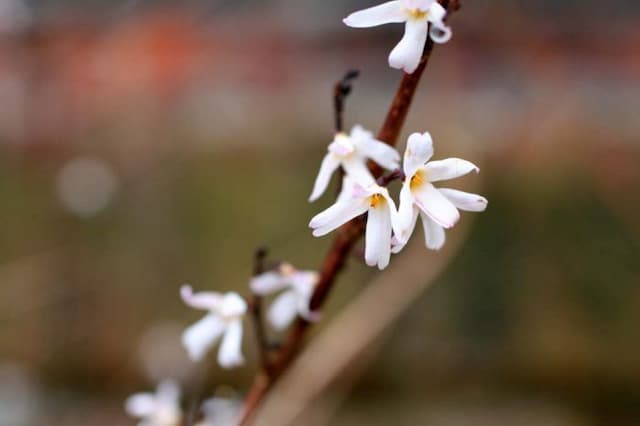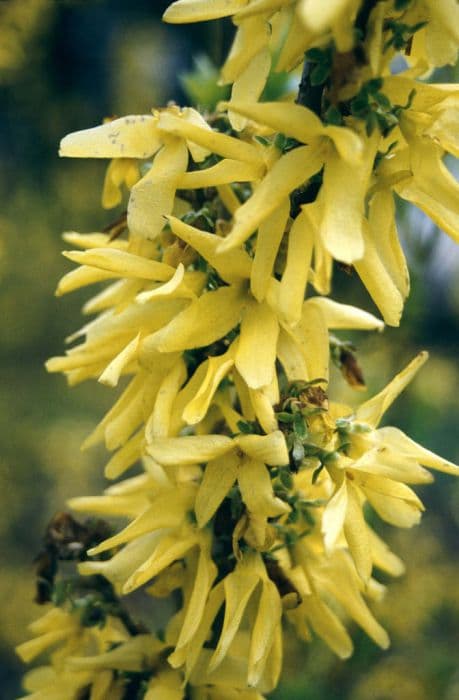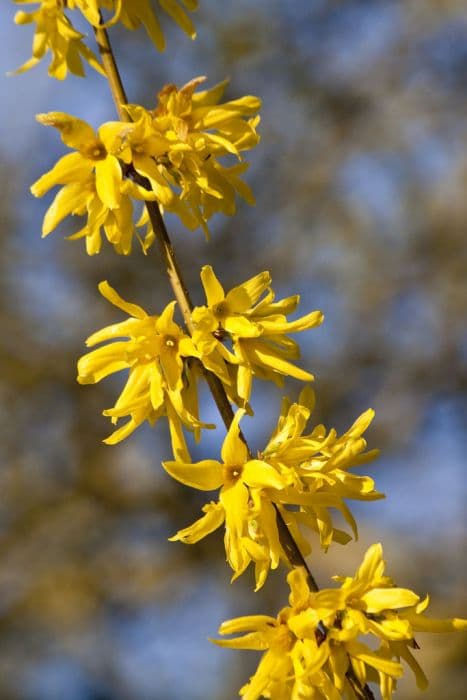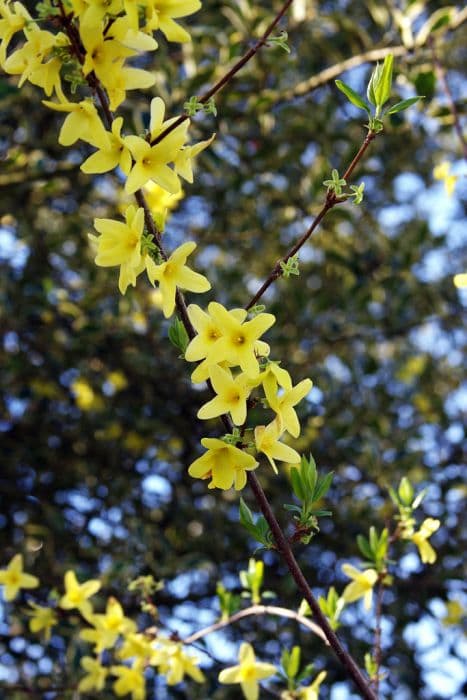Lilac 'Mrs Edward Harding' Syringa vulgaris 'Mrs Edward Harding' (d)

ABOUT
'Mrs Edward Harding' is a bushy medium-sized deciduous shrub with dark green, heart-shaped leaves and dense panicles of fragrant, deep purplish-red, double flowers soon fading to deep pink
About this plant
 Names
NamesFamily
Oleaceae
Synonyms
Common Lilac, French Lilac
Common names
Syringa vulgaris 'Mrs. Edward Harding'
 Characteristics
CharacteristicsLife cycle
Perennials
Foliage type
Deciduous
Color of leaves
Green
Flower color
Pink
Height
8-15 feet (2.4-4.6 meters)
Spread
6-12 feet (1.8-3.7 meters)
Plant type
Shrub
Hardiness zones
3-7
Native area
Europe
Benefits
 General Benefits
General Benefits- Aesthetic Appeal: Syringa vulgaris, commonly known as common lilac, is renowned for its beautiful, fragrant flower clusters that add color and visual interest to gardens.
- Habitat for Wildlife: The blooms provide nectar for butterflies and the dense foliage can serve as nesting sites for birds.
- Landscape Design Versatility: The common lilac can be used as a hedge, screen, or as a standalone specimen, adding structure to garden designs.
- Shade Provision: Once mature, it can offer a fair amount of shade in garden settings or when planted near patios or seating areas.
- Seasonal Interest: With its spring bloom time, the common lilac provides early seasonal interest after a long winter.
- Cultural Significance: Many cultures appreciate the common lilac for its beauty and fragrance, often associating it with love, spring, and renewal.
- Durability: This plant is known for being quite hardy and can withstand cold climates.
- Ease of Propagation: It can be propagated from cuttings, allowing gardeners to easily share and spread this beloved plant.
 Medical Properties
Medical PropertiesThis plant is not used for medical purposes.
 Air-purifying Qualities
Air-purifying QualitiesThis plant is not specifically known for air purifying qualities.
 Other Uses
Other Uses- Lilac wood is dense and can be used for carving or making small items like knife handles, due to its fine grain and durability once properly dried.
- The flowers of the Syringa vulgaris can be used in perfumery, as their strong sweet fragrance can be captured to make scents and essential oils.
- The blooms can be used in cosmetic products like soaps and creams for their scent and potential skin-soothing properties.
- Lilac blossoms are sometimes crystallized or used as edible decorations in desserts, adding a floral note to culinary creations.
- They can be employed as an ornamental feature in craft projects, such as in dried flower arrangements or potpourris.
- In landscape design, the plant is used to create hedges or privacy screens due to its dense foliage and rapid growth.
- Dye extracted from the flowers can impart a light green hue to fabrics or other materials.
- The plant can be trained into a small tree, providing an interesting architectural element in gardens and parks.
- During seasonal festivals, the flowers may be included in garlands or wreaths for their attractive appearance and aroma.
- A sprig of blooming lilac is traditionally seen as a symbol of love or affection and can be presented in cultural ceremonies or personal tokens.
Interesting Facts
 Feng Shui
Feng ShuiThe plant common lilac is not used in Feng Shui practice.
 Zodiac Sign Compitability
Zodiac Sign CompitabilityThe common lilac is not used in astrology practice.
 Plant Symbolism
Plant Symbolism- Purity: Syringa vulgaris, commonly known as lilac, often symbolises purity due to its delicate and often light-colored blooms.
- First Emotions of Love: Lilacs, with their springtime blooming, are seen as a symbol of young love or the first emotions of love, as they signify the beginning of feelings and the freshness of a new relationship.
- Youthful Innocence: As lilacs typically bloom early on in the springtime, they are associated with the innocence and carefree nature of youth.
- Renewal and Fresh Beginnings: The blooming of lilacs marks the end of winter and the start of spring, heralding in renewal and the promise of new beginnings.
- Nostalgia and Remembrance: Lilacs have a strong scent that can evoke memory and nostalgia, making them a symbol for remembering past loves or the bittersweetness of a memory.
- Beauty and Pride: Lilacs have lush, aromatic blooms which represent the beauty and pride of life, suggesting that one should take pride in their own unique beauty.
 Water
WaterFor the common lilac (Syringa vulgaris 'Mrs Edward Harding'), water the plant deeply to ensure moisture reaches the root zone, generally providing about 1 inch of water weekly. The exact frequency of watering can vary depending on climate and soil conditions, but during the growing season, it may be necessary to water once or twice per week, especially in periods of drought or high heat. During winter, cut back on watering as the plant requires less moisture. Always check the soil moisture by feeling it a few inches below the surface; water only when the soil feels dry to the touch to avoid overwatering, which can lead to root rot.
 Light
LightThe common lilac (Syringa vulgaris 'Mrs Edward Harding') thrives in full sun, which means it should receive at least six hours of direct sunlight each day. An ideal spot for this plant is in an area where it is exposed to unfiltered sunlight for the majority of the day. While lilacs can tolerate light shade, too little light can result in fewer blooms.
 Temperature
TemperatureThe common lilac (Syringa vulgaris 'Mrs Edward Harding') performs well in a wide range of temperatures and is hardy in USDA zones 3 through 7. It can survive winter temperatures as low as -40 degrees Fahrenheit and is equally tolerant of summer highs, but it grows best in areas where the average temperature is between 60 and 75 degrees Fahrenheit. Lilacs need a period of winter chill to produce vigorous blooms in the spring.
 Pruning
PruningPrune the common lilac (Syringa vulgaris 'Mrs Edward Harding') immediately after blooming to shape the plant and remove spent flower clusters, which encourages the development of next year's buds. Pruning increases light and air flow to the plant, promoting healthy growth and preventing disease. Annually remove any dead or diseased branches, and consider thinning out older stems to rejuvenate the plant every few years.
 Cleaning
CleaningAs needed
 Soil
SoilLilac 'Mrs Edward Harding' thrives in well-drained, fertile, humus-rich soil with a pH of about 6.5 to 7. The best soil mix can be prepared by incorporating compost or aged manure to existing soil to improve fertility and structure.
 Repotting
RepottingLilacs, including the variety 'Mrs Edward Harding', are typically planted in the ground and do not require regular repotting. Only pot-grown specimens may need repotting every few years during dormancy when they outgrow their current container.
 Humidity & Misting
Humidity & MistingLilacs like 'Mrs Edward Harding' prefer average humidity levels found in typical outdoor environments and do not have specific humidity requirements.
 Suitable locations
Suitable locationsIndoor
Place lilac 'Mrs Edward Harding' in bright light, cool temps, and well-draining soil.
Outdoor
Plant in full sun, fertile soil; water regularly until established.
Hardiness zone
3-7 USDA
 Life cycle
Life cycleCommonly known as 'Mrs. Edward Harding' lilac, Syringa vulgaris 'Mrs Edward Harding' (d) begins its life cycle with seed germination, which occurs when conditions are warm and moist, generally in the spring. The seedling stage follows, wherein the young plant establishes its root system and begins to develop its first leaves and shoots. As it enters the vegetative stage, the lilac focuses on growth, producing sturdy stems and the characteristic heart-shaped leaves in preparation for eventual blooming. During the reproductive stage, which typically occurs in mid-spring, the plant produces fragrant, deep purple flower panicles, attracting pollinators and enabling sexual reproduction. After pollination and fertilization, the plant develops seed pods that mature and release seeds to complete the cycle. Throughout its life, the lilac enters a period of dormancy in the winter, conserving energy for the burst of growth in the following spring.
 Propogation
PropogationPropogation time
Spring-Early Summer
The most popular method of propagation for Syringa vulgaris, commonly known as common lilac 'Mrs Edward Harding', is through softwood cuttings. This technique is typically carried out in late spring or early summer when the new growth is still tender and not yet woody. To propagate by cuttings, a gardener would first select healthy, non-flowering shoots, cutting a 4 to 6-inch-long (10 to 15 centimeters) section just below a leaf node. The lower leaves are removed and the cut end dipped in rooting hormone to encourage root development. The cutting is then planted in a well-draining soil mix, kept moist, and placed in a location with indirect light and a consistent temperature, often under a propagation dome or plastic bag to maintain humidity. With proper care, the cutting will develop roots and can eventually be transplanted into the garden.









